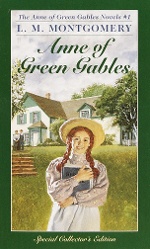Much Ado About Middle Grade
When we set out to write a few pages about this issue’s centennial mini-theme of middle grade, we were somewhat daunted, and with good reason. We’ve said this before, but — it’s a huge topic, and one we’ve covered extensively throughout our hundred years.
When we set out to write a few pages about this issue’s centennial mini-theme of middle grade, we were somewhat daunted, and with good reason. We’ve said this before, but — it’s a huge topic, and one we’ve covered extensively throughout our hundred years. Our first recommended booklists, in October 1924, were split into categories: Books for 4–8 Years Old, Books for 8–12 Years Old, Books for 12 Years and Older; and our first Summer Reading list, in June 1925, went so far as to recommend titles “For an EIGHT year old boy or girl,” “For a NINE year old boy or girl…” up to age twelve. Guidelines are helpful as a starting point, but as we now say at the beginning of every Magazine issue’s book review section, “Grade levels are only suggestions; the individual child is the real criterion.”
With that said, middle grade is generally considered to include books in the 8–12 age range. But the category can be tricky to generalize (does middle school fit in? Do early chapter books?) given the many variables in readers’ skill levels, interests, maturity, etc. During the twentieth century, as new publishing categories, such as young adult and early readers, developed around it, the classification that we’ve come to know as middle grade has also stretched its wings.
When Frederic G. Melcher proposed the creation of the John Newbery Medal in 1921, it was for “the most distinguished American children’s book published the previous year,” and those are the titles that many people associate with children’s literature. There’s the old adage that Newbery books never go out of print, and middle grade is often the largest section in a library’s children’s room. Today’s John Newbery Medal Committee Manual specifies: “Children are defined as persons of ages up to and including fourteen, and books for this entire age range are to be considered.” Most (though not all!) Newbery winners and honor books are firmly middle grade, and when books fall outside the category, it often sparks discussion and debate.





Some of the Horn Book’s favorites — Anne of Green Gables, One Crazy Summer, All-of-a-Kind Family, The Watsons Go to Birmingham — 1963, Tuck Everlasting, Merci Suárez Changes Gears, just to name a few — are middle grade. See Elissa Gershowitz’s editorial on page 5 for more about one “terrific” and much-talked-about title from our history. And it may be the main battleground for what counts as “good literature” or even as “real” reading. When the Captain Underpants and Wimpy Kid books came out, they were accompanied by much hand-wringing — and flew off the shelves into the hands of middle graders (some deemed “reluctant readers”) who laughed out loud at the (transgressive) antics and thrilled to the experience of choosing their own books.
Maybe it’s because the middle-grade years are formative years; maybe it’s because that’s when kids start to make their own reading choices, or, conversely, maybe it’s because these books are taught in schools and the focus of library reading programs. See Amanda Lawrence’s Field Notes column, “I’m Dreaming of…Winter Reading!” on page 15. Whatever the reason, middle-grade literature is a hot topic well beyond its target audience — which is part of why gatekeepers for this age find themselves in the position of needing to be heroes and champions for books and their readers. See Kekla Magoon and Cynthia Leitich Smith’s Writers’ Page column, “The Heroes Inside Us,” on page 8.
To us, of course, the questions and discussion are what most matter, and everything counts toward a love of reading. See Thom Barthelmess’s May/June 2015 article “From Series to Serious,” which gives background on the Stratemeyer Syndicate’s Nancy Drew and Hardy Boys books starting in the 1920s and 1930s to the Baby-Sitters Club and Animorphs books starting in the 1980s and 1990s as well as focusing on some series authors’ standalone works. See Gershowitz’s March/April 2020 article “Middle-Grade Graphic Novels Make Good.” And see Roger Sutton’s “What Hath Harry Wrought?” in the May/June 2012 issue. The phenomenally popular series (now controversial due to views expressed by its author) started as middle grade, though by the end of the series it had aged into YA — and it was so big, among readers well beyond a typical middle-grade audience, that it changed the size and shape of the industry.
As the industry continues to shift and evolve, we’re seeing very welcome inclusion — a far cry from the backlash Martha V. Parravano and Lauren Adams received to their January/February 1996 editorial, “A Wider Vision for the Newbery.” See Linda Sue Park’s May/June 2022 article “From Trend to Norm: How the Last Twenty Years of the Newbery Can Guide Us” as a celebration of the newer books that can become, in many people’s minds, synonymous with children’s literature. May they stay in print and populate shelves for the next hundred years.
 From the September/October 2024 issue of The Horn Book Magazine. For more Horn Book centennial coverage, click here.
From the September/October 2024 issue of The Horn Book Magazine. For more Horn Book centennial coverage, click here.
 Single copies of this issue are available for $15.00 including postage and may be ordered from:
Single copies of this issue are available for $15.00 including postage and may be ordered from:
Horn Book Magazine Customer Service
hbmsubs@pcspublink.com
Full subscription information is here.
ALREADY A SUBSCRIBER? LOG IN
We are currently offering this content for free. Sign up now to activate your personal profile, where you can save articles for future viewing.






Add Comment :-
Comment Policy:
Comment should not be empty !!!